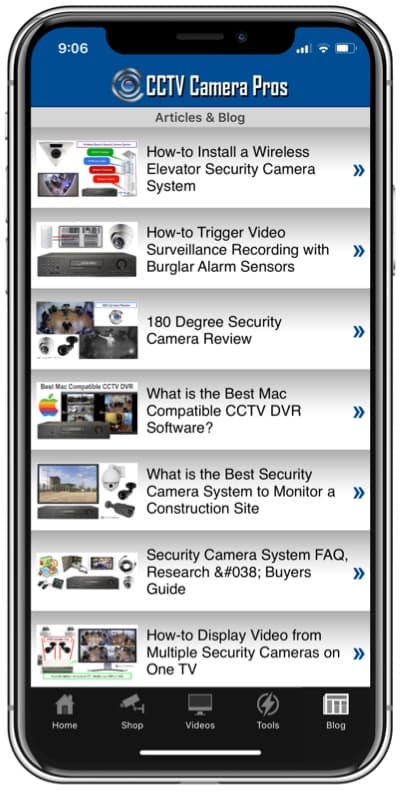How to Remotely View a Security Camera Installed at a Location with No Internet Access
Recently, I spoke to a business owner of a farm who wanted to setup IP security cameras in his barn to keep an eye on his horses. The farmer wanted to watch live video of the horses in their stalls from his house (which is located about 400 feet away from the barn). He also wanted to monitor his cameras when he was away from the farm using his mobile phone. The problem is that the barn does not have an Internet connection.
The farmer had already looked into services like StallWatch which use a cellular Internet connection in remote locations such as horse stalls, but he told me that the high setup and recurring cost of services like these are not feasible for most horse owners.
Using a Long Range Wireless Bridge with Cameras
The above picture provides an overview of how to use a long range wireless bridge to network two buildings (one with and one without Internet access) so that live video from an F3210 IP camera can be remotely viewed from over the Internet. The building on the left represents the farmer’s barn (no internet access, but has power) and the building on the right represents the house. This particular barn was built to be very weatherproof and it is located in an area where there is very little moisture. For areas with more moisture or if the camera is going to directly exposed to more harsh weather elements, I would recommend an outdoor weatherproof camera.
Important note: long range wireless systems require a direct line of sight between the transmitting and receiving antennas. There can be no objects such as buildings and trees that obstruct the view between antennas.
Here is how the system works. Long rang wireless systems, such as the WIFI-EH9500, include a transmitter and receiver antennas.
- Mount the transmitter of the wireless system on the outside of the building that does not have an Internet connection. In this case, the horse barn.
- Drill a hole through the exterior wall to feed the power cable and a CAT-5 cable inside the barn.
- Mount the camera and connect it to the wireless transmitter using the CAT-5 cable.
- Connect the power supplies of the camera and WIFI transmitter to a power outlet.
- Mount the wireless receiver on the house.
- Drill a hole in the exterior wall for the CAT-5 and power cable for the receiver antenna.
- Connect the CAT-5 cable to your network router.
- Connect the power supply of the receiver antenna to a power outlet.
- The transmitter / receiver pair are configured to form a wireless bridge over WIFI. They can be configured to only connect to each other so there is no interference from other WIFI equipment. The purpose of the wireless bridge is for the camera to communicate with the home network. The home network is connected to a high speed Internet connection such as cable or DSL.
- Port forwarding is configured on the router so that the IP camera can be accessed from remotely over the Internet. You can learn more about port forwarding here.
- The live video from the camera in the horse stall can now be accessed from anywhere in the world from a web browser. You can require a userid and password for access. The camera can be accessed from Mac, Windows, Android, and iOS.
Zavio video servers and IP cameras support remote access from a web browser that works for Windows and Mac PCs. Users can have an even better experience on cellular devices using the iCamViewer app for iOS and Android mobile.
More Video Surveillance Uses for Wireless Bridges
In addition to this single IP camera system explained above, here are some additional ways to use long range wireless systems with multiple security cameras.
Multiple IP Cameras
You can connect multiple IP cameras to a network switch in the building with no Internet access, then connect the switch to the wireless transmitter antenna. Now all of the cameras are connected to the network in the building with Internet access. All cameras can be made accessible over the Internet by setting up port forwarding for each of them.
CCTV Cameras Connected to DVR
You can use a wireless system with CCTV cameras if you have a DVR that is network-able. Here is how this works. The CCTV cameras are hard wired to a DVR using coax cable. The DVR is connected to the wireless transmitter with CAT-5 cable. Now the DVR is available on the network and can be controlled remotely using apps for iPhone, Android, Mac, and Windows. Users can view all cameras that are connected to the DVR. You can see sample videos of DVR viewer apps here.
CCTV Camera Pros has helped many homeowners and business owners setup wireless camera systems like the ones described above. If you have any question about the systems discussed in this article or anything else related to video surveillance, please contact me at mike@cctvcamerapros.net.










